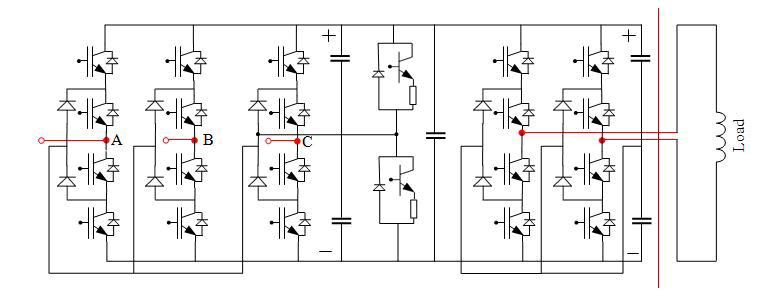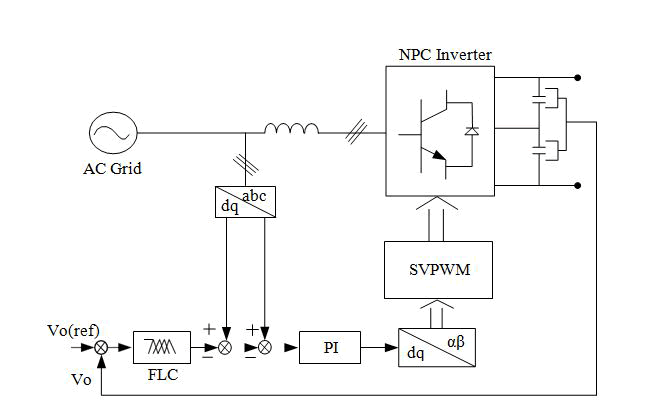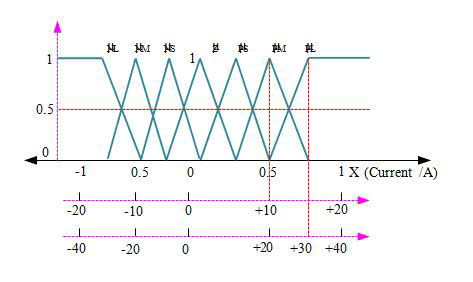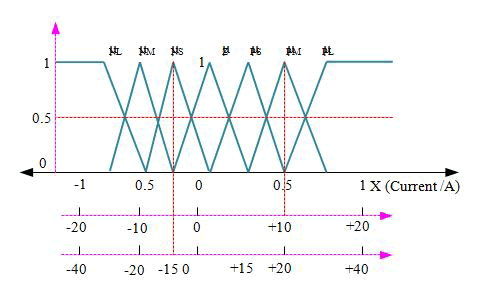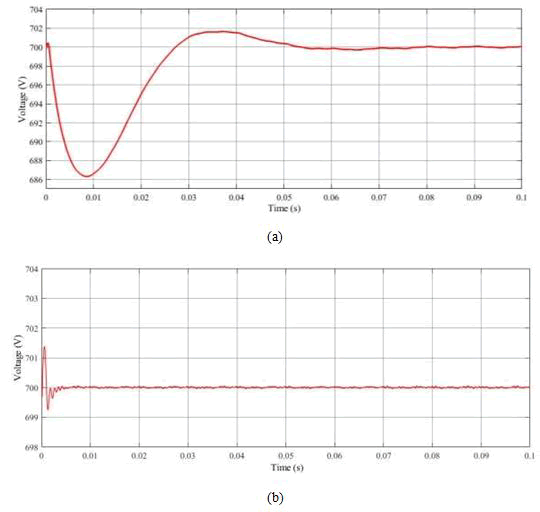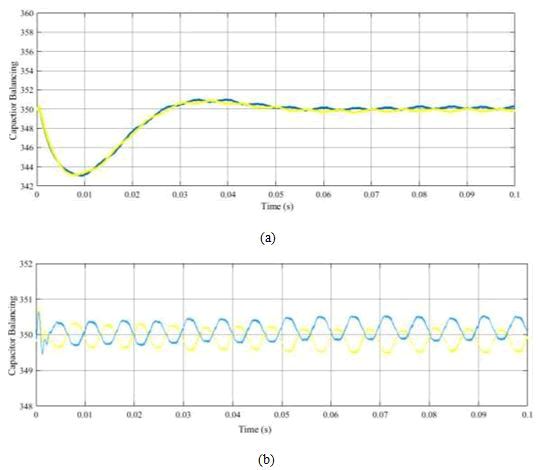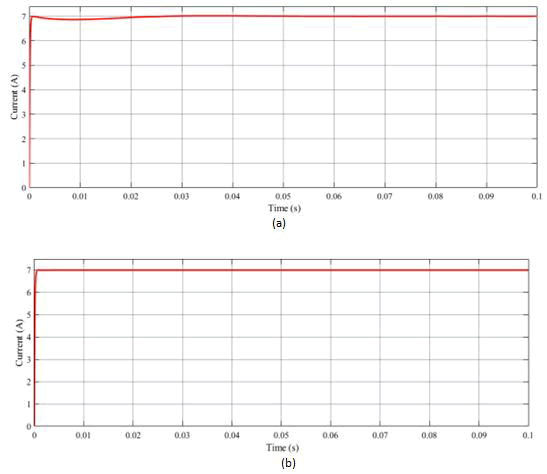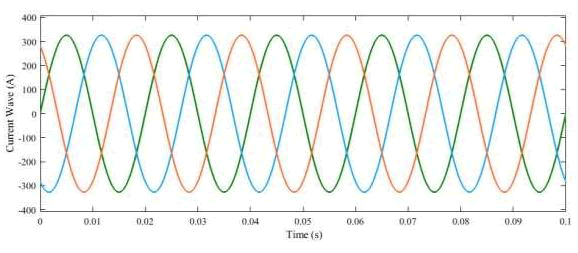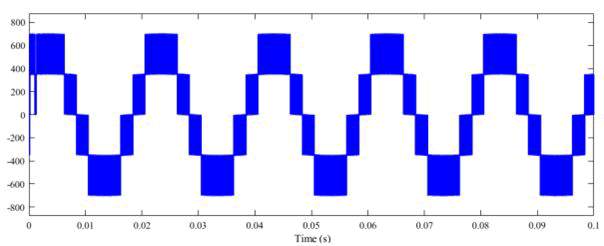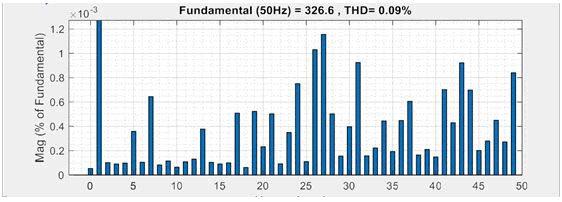Research Article, J Nucl Ene Sci Power Generat Technol Vol: 11 Issue: 8
Multilevel NPC Convert for CFETR Tokamak Power Supply and Control
Mahmood Ul Hassan1*, Zaffar Nawaz Hayat Khan1, Lian Sheng Huang2, Peng Fu2, Mubashir Hassan3 , Muhammad Humayun3 and Muhammad Mansoor3
1Department of Engineering and Technology, Balochistan University of Engineering and Technology, Khuzdar, Pakistan
2Department of Medical Sciences, Institute of Plasma Physics, Chinese Academy of Sciences, Hefei, China
3Department of Basic Sciences, Shanghai Jiao tong University, Shanghai, China
*Corresponding Author: Mahmood Ul Hassan, Department of Engineering and Technology, Balochistan University of Engineering and Technology, Khuzdar, Pakistan, Tel: +923367521224; E-mail: mahmoodkk87@gmail.com
Received date: 06 August, 2022, Manuscript No. JNPGT-22-71354; Editor assigned date: 9 July, 2022, PreQC No. JNPGT-22-71354 (PQ); Reviewed date: 23 August, 2022, QC No. JNPGT-22-71354; Revised date: 05 October, 2022, Manuscript No. JNPGT-22-71354 (R); Published date: 12 October, 2022, DOI: 10.4172/ 2325-9809.1000306
Citation: Hassan MU, khan ZNH, Huang LS, Fu P, Hassan M, Humayun M, Mansoor M (2022) Multilevel NPC Convert for CFETR Tokamak Power Supply
and Control. J Nucl Ene Sci Power Generat Technol 11:8.
Abstract
The CFETR (China Fusion Engineering Test Reactor) is the largest TOKAMAK in china. The power supply converter control is the challenging task in the TOKAMAK system. Multilevel converter topology is promising for medium voltage high power application. The multilevel NPC converter control is complicated, especially in fusion application. The complex mathematical modeling is the immense issues at the complex converter control. In this paper the novel topology and control strategy is proposed. The new Fuzzy Controller (FC) strategy is developed for CFETR. The feasibility analysis using multilevel NPC converter is proposed. The SVPWM strategy shows the ability of this control method to balance the DC bus voltages. The MATLAB/Simulink software is used to validate the proposed model.
Keywords: TOKAMAK, Fuzzy controller, Fuzzy logic controllers, Multilevel converters, Power filters
Keywords
TOKAMAK; Fuzzy controller; Fuzzy logic controllers; Multilevel converters; Power filters
Introduction
In the power electronics converter, the novel converter topology is not only focused, but the advance control strategies are the more concerned field [1]. Recently, intelligent controllers such as Fuzzy Logic Controllers (FLCs), artificial neural networks and linear quadratic regulators have become increasingly useful when the system dynamics are not well known or contain significant nonlinearities [2].
Modern technology and gadgets have offered up new possibilities for power converter control. When compared to typical PWM based linear controllers, FLC has emerged as a promising control option [3,4].
Multilevel Converters (MLCs) have had a lot of success in the industry for medium voltage and high power applications such variable speed drives, distributed generation and active power filters [5]. The diode with the Neutral Point Clamped (NPC), flying capacitor and cascaded H bridge, for the aforementioned applications, power converters have emerged as a popular topology [6-10]. Once compared to two-level converters, MLCs have better harmonic performance and higher power capacities [11].
Figure 1 shows three phase multilevel NPC and H bridge parallel converter system topology. The CFETR TOKMAKE system needs high current to sustain the plasma. The multilevel parallel NPC converter with fuzzy logic controller provides a high current up to 66 kA is provided in parallel to the inductive load.
In this paper the multilevel converter topology and fuzzy control strategy is the naval contribution for CFETR china. Fuzzy logic controller is used to balance the DC voltage. Due to the variations in load, most of these applications require a quick control system to optimise efficiency, reduce losses and increase performance.
The section I, of the paper is introduction, section II, describe the multilevel converter layout section III, elaborate the fuzzy control strategy, section IV, explain the results of the proposed work, section V comes to the conclusion.
Materials and Methods
Multilevel converter layout (controller design)
The adopted three-phase neutral-point clamped bidirectional rectifier's control approach, as illustrated in Figure 2. The dcomponent of source current for the inner loop fuzzy PI current controller is shown in the Figure 2. Id is compared against Id *, a predefined reference value. The obtained error, e (n)=Id *-Id and the change of error signal, ce (n)=e (n)-e (n-1), at the nth sampling instant are employed as fuzzy processing inputs. The fuzzy controller's output is used as the reference vector for computing Vd*, from which VC * is calculated after converting from a spinning d-q to a stationary αβ reference frame.
One of the inputs to the space vector modulator is this in fact, the active power that should be transferred to the converter output (load) corresponds to the current component Id in one current controller, while the reactive power transferred by the rectifier with the ac mains corresponds to the current component Iq in the other current controller.
It is demonstrated that the Fuzzy controller has the good current tracking capability as a traditional PI controller, but with less transient overshoot.
Fuzzy control strategy
The FC control theories have tremendous increased since its advancement by Zadeh [3]. The practical implementation of the FC controller was design by Mamdani and has colleges [4]. The theory of fuzzy sets and fuzzy logic will not be covered in this article. The proposed FL based controller's design procedure, on the other hand, is detailed.
A FL controller's operation is comparable to that of a human operator. By altering the input signal while just looking at the system output, it mimics the actions of a human operator. As shown in Figure 3, a FL based controller is made up of three sections; fuzzifier, rule basis and defuzzifier.
The primary signal and its change for each sampling are converted to fuzzy numbers in the fuzzifier before being sent to the FL controller. The fuzzy number of the corrected output signal is then determined using the rule table. Finally, the crisp values are transformed from the resultant united fuzzy subsets representing the controller output. The FL based controller is intended to serve as an integrator. As a consequence, the incremental output Δw (k) is added to the prior value w (k-1) to produce the current output u (k). An integrator's digital solution based on Euler's integration as,

The word Δw (ki) is used to describe a digital integration.

The integral constant is KI, the sampling time is Ts and the integrated signal is e (ki). When the input e (k) is zero, the change Δu (ki) on an integrator's output is zero. As a result, the integrator's output keeps the previous value. As a result, equation (1) can be utilised as an integrator and a FL controller.
Fuzzy set rules determine the antecedent degree which is satisfied for each rule. Let suppose the first step is to measured signal convert into fuzzy variables. The classified signal x is split into common fuzzy five levels as follows. Three of them are shown in Figure 4, positive large, positive medium and zero. Figure 4 shows the complete five levels of the membership functions.
• Membership positive large
• Membership positive medium
• Membership small (zero)
• Membership negative medium
• Membership negative large
The fuzzy operators are applied if the antecedent clause has more than one to obtain one number for that rule. It is probable may fire more rules at the same time. For most fuzzy controller the important part is the design of rule base. The rule base can characterize a human proficient “in the loop” the expert knowledge could be controlling the dynamics in the set of control rules that make sense.
Figures 5 and 6 shows the input 1 of current controller Id1 an input 2 current Id2. In fact, most of the industry and power system application utilized the PI controller widely due to it simple and practical configurations. The conventional controller PI control signal can be classified in time domain by expression.
However, the performance of the conventional PID controller is not providing the reasonable approach in case of an extensive range of operating situations due to fixed gains. The coefficients Ki and Kp are basically tuned by the fuzzy inference knowledge system. A set of rules is presented here to control parallel system parameter which is given in Table 1. The quantization factor is characterized by the input response adjusted, accordingly.
| e | Δe | |||||
|---|---|---|---|---|---|---|
| NL | NM | ZZ | MP | LP | ||
| LP | ZZ | MP | MP | LP | LP | |
| MP | NM | ZZ | MP | MP | LP | |
| ZZ | NM | NM | ZZ | MP | MP | |
| NS | NL | NM | NM | ZZ | MP | |
| NB | NL | NL | NM | NM | ZZ | |
Table 1: Decision fuzzy rule table.
Results and Discussion
Simulations results
Three phases NPC multilevel converter is proposed primary for the tokamak system. The Mat lab/Simulink software tool is used for the system design. The DC bus voltage reference is 700V for each NPC converter. Following parameters for the multilevel converter is given.
Figure 7 (a) shows the response of the PI controller for NPC multilevel output voltage. The PI control overshoot responses have slowed to stable the system. Figure 7 (b) shows the NPC multilevel output voltage controller response.
As shown in comparison graph the FC controller has excellent performance than PI controller. Moreover, the output voltage overshoot is much less in FC.
Figure 8 (a) shows the PI controller response of the system. The variation of the voltage balancing response is more which is not convenient for such Fusion reactor. The Figure 8 (b) shows the FC multilevel converter response is very stable and there is no such variation has been occur. The FC multilevel converter is suitable choice for CFETER TOKMAKE system.
Figure 9 (a) and (b) shows the current response of the PI and PC controller strategy. The FC multilevel converter control current response is more suitable than the fuzzy response.
Figure 10 shows the three phase current wave form. The current wave is smooth which is suitable for CFETRR TOKAMAK system. Figure 11 shows the line to line voltage waveform.
The Figure 12 shown the fundamental frequency and THD is 0.09%. THD is dangerous for the inductive TOKMAKE system. The multilevel FC controller reduces the THD and improves the system performance.
Conclusion
The three phase three level NPC multilevel converter is proposed for CEFTR TOKMAK in this paper. The complex mathematical modeling is difficult for such fusion power supply. The intelligent control strategy is important to control modern technology fusion power supply. The comparison studies with fuzzy controller have been elaborated. Due to the good fuzzy controller response and reduce the transient time fuzzy controller have good performance. The simulation results validated that fuzzy controller is more robust for plasma converter application. Multilevel converter using fuzzy controller for CFETR power supply control are suitable choice.
References
- Aghdam MM, Aguilera RP, Li L, Zhu J (2017) Fuzzy-based self-tuning model predictive direct power control of grid-connected multilevel converters. 2017 20th International Conference on Electrical Machines and Systems (ICEMS).
- Lee CC (1990) Fuzzy logic in control systems: Fuzzy logic controller II. IEEE Trans Syst Man Cybern 20:419-435.
- Mamdani EH, Assilian S (1975) An experiment in linguistic synthesis with a fuzzy logic controller. Int J Man-Machine Stud 7:1-13.
- Vazquez S, Rodriguez J, Rivera M, Franquelo LG, Norambuena M (2017) Model predictive control for power converters and drives: Advances and trends. IEEE Trans Ind Electron 64:935- 947.
- Leon JI, Kouro S, Franquelo LG, Rodriguez J, Wu B (2016) The essential role and the continuous evolution of modulation techniques for voltage-source inverters in the past, present and future power electronics. IEEE Trans Ind Electron 63:2688-2701.
- Scoltock J, Geyer T, Madawala UK (2015) Model predictive direct power control for grid-connected NPC converters. IEEE Trans Ind Electron 62:5319-5328.
- Aguilera RP, Lezana P, Quevedo DE (2015) Switched model predictive control for improved transient and steady-state performance. IEEE Trans Industr Inform 11:968-977.
- Vyncke TJ, Thielemans S, Melkebeek JA (2013) Finite-set model-based predictive control for flying capacitor converters: Cost function design and efficient FPGA implementation. IEEE Trans Industr Inform 9:1113-1121.
- Salinas F, González MA, Escalante MF (2016) Finite control set-model predictive control of a flying capacitor multilevel chopper using petri nets. IEEE Trans Ind Electron 63:5891-5899,
- Baidya R, Aguilera R, Acuna P, Vazquez S, Mouton HD (2017) Multistep model predictive control for cascaded h-bridge inverters: Formulation and analysis. IEEE Trans Power Syst 33:876-886.
- Fazel SS, Bernet S, Krug D, Jalili K (2007) Design and comparison of 4-kV neutral-point-clamped, flying capacitor and series-connected H-bridge multilevel converters. IEEE Trans Ind Appl 43:1032-1040.
 Spanish
Spanish  Chinese
Chinese  Russian
Russian  German
German  French
French  Japanese
Japanese  Portuguese
Portuguese  Hindi
Hindi 